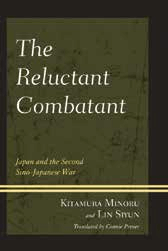Issue:
When national master narratives collide head-on, all bets are off on historical credibility.
ON APRIL 2, 2007, prior to the 70th anniversary of the events that took place in Nanjing in Dec. 1937, the historian Minoru Kitamura launched the English edition of his book, The Politics of Nanjing, with a Book Break at the FCCJ. The event drew an audience of 51, including a sizeable press pack, among them TV film crews and 15 journalist members. The audience, particularly the journalists, seemed to treat Prof. Kitamura’s thesis with unjustifiable hostility. Most queried his avoidance of the word “massacre” and his use of the gentler and no more specific term “disorder,” and some insisted that he qualify what he called “emotive terms” such as “massacre” with a specific number. Others felt that he lost academic credibility by describing the Chinese as a people “prone to cultural exaggeration.”
“Nevertheless,” Prof. Kitamura then insisted, as far as Nanjing was concerned, “I am a Centrist” thus staking out the middle ground on Nanjing: those who consider the events of the winter of 1937 as neither a massacre nor an illusion, but who research the evidence and historiography and aim for balance.

Seven years later, on Wed. Nov. 12, Kitamura returned to the Club for a Book Break on the English edition of his recent study, The Reluctant Combatant: Japan and the Second Sino-Japanese War. With him was co-author Dr. Lin Siyun, who was born in Nanjing, has a PhD in engineering and has published criticism of conventional mainland Chinese attitudes to the history of its interactions with Japan in Epoch Times and other online Chinese media.
Though the audience was slightly smaller with half as many journalists, Prof. Kitamura had plenty of support. After introducing a member of the audience, Hiromichi Moteki, Secretary of the Society for the Dissemination of Historical Fact, on whose website the book has already been posted, he turned the dais over to a specialist in international law. His role was to illuminate a key contention of Reluctant Combatant: that, by the time of the Second Sino Japanese War, waging “aggressive war” was not a crime recognized in international law, and was still not recognised as such at the “League of Nations” in September 1944. According to Kitamura, the term had come to be “reflexively applied” to Japan following its use at Nuremberg and the International Military Tribunals for the Far East.
Unfortunately, by this time, the audience had become restive.
One audience member pointed out that in raising the issue of the legality of waging aggressive war, Kitamura and Lin were setting up a straw man. The lawyer eventually stepped aside and Kitamura moved on to his broader contention that in the 1920s and 1930s Japan and China were rivals in East Asia who, at any other time, might have worked together to modernize and combat “Western aggression.”
Kitamura and his co-author then put forward their case for describing Japanese military incursions in China in the Second Sino Japanese War as “reluctant.” Of course, reluctance to wage war, aggressive or otherwise, is not in itself unusual, and in their address the authors set up a new straw man that of “standard historical analysis,” according to Kitamura and his co-author then put forward their case for describing Japanese military incursions in China in the Second Sino Japanese War as “reluctant.” Of course, reluctance to wage war, aggressive or otherwise, is not in itself unusual, and in their address the authors set up a new straw man that of “standard historical analysis,” according to
Neither author was, however, reluctant to single out China as a perpetrator of untruths, maintaining that the “traditional Chinese historical perspective . . . does not concern itself with the truth,” and that “the first duty of Chinese historians is protecting their nation.” Indeed, they said, Chinese historians saw their main function as constructing “a righteous image of China.” And the authors reprised Kitamura’s notion of “the Chinese philosophy of exaggerated self promotion while covering up or lying to cover faults.”
Club Member Gregory Clarke made some pointed interventions. Maintaining that much of what Kitamura and Lin had to say was already accepted by mainstream historians, and agreeing that the Chinese were in the main hostile to Japan, he cut straight to the chase with the question, “But why did that hostility exist?” to which he received no answer.
Thereafter this Book Break ceased as a discussion and morphed into a series of remarkably consensual speeches from various grey eminences in the audience, broadcasting not much Q and receiving very little A.
A great deal of sincerity went into this Book Break. The authors were clearly committed to finding some sort of truth, if not “the truth” that no realistic historian can ever hope to find. Japan does have a case. China does have unanswered grievances. But, until historians on all sides of this debate engage more fully, as the authors put it, “Reconciliation between Japan and China will be extremely challenging at best.” In any perennially controversial issue, we need to talk more to our opponents than we do to our friends.
Peter O’Connor writes and lectures on the international media history of East Asia.

